Graham Reid | | 4 min read
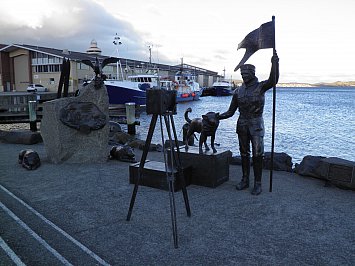
On the foreshore of Sullivan's Cove – the tourist hub of Hobart, Tasmania's capital – is a collection of interesting bronze statues. The largest is of a man holding aloft a wind-blown flag, his other hand patting a dog at his side, and they are posing before an old squeeze-box style camera on a tripod.
This heroic figure – whipped by spray in winter, burned by the sun in summer – is the scientist Louis Bernacchi who, in 1898-99, was the first Australian to winter on the Antarctic ice.
Belgian-born Bernacchi joined the famous Southern Cross Expedition when the previous physicist was rejected on medical grounds and so, the boy schooled in Hobart and trained as an astronomer in Melbourne, made history. And not for the first time. This remarkable man later joined Sir Robert Falcon Scott's 1901-04 expedition and explored the Amazon.
The dog is his favourite husky Joe, who accompanied him on both expeditions.
Hobart – today a hip city of restaurants, cafes, upmarket art galleries and all the other trappings of the sophisticated upwardly mobile 21st century – was once a seafaring town from which numerous historic Antarctic expeditions departed. Here along the foreshore are the old buildings, now renovated, which once housed pubs and prostitutes, sealers and whalers, scientists and ne'er-do-wells.
This town of almost 240,000 – originally a penal colony on the shore of the Derwent River – is a place where aboriginal people and Charles Darwin once walked. The Australian polar explorer Sir Douglas Mawson set out from here in December 1911 on a voyage of incredible hardship which included 160kms traveling alone across the ice.
Ironically, his name is given to Mount Mawson, a popular ski-field northwest of the city.
Hobart wears its history confidently. The recently opened Cascades Female Factory just 10 minutes from the foreshore on the site of the former women's prison – which housed 1200 women and children between 1828 and 1856 – offers guided tours of this World Heritage Site and an insight into a brutal and repressive slice of the island's past.
It is near the famous Cascade Brewery if you feel like a fortifying drink after the history lesson. Take the 90 minute tour and end with a pint in the convivial surroundings.
For an even more emotional experience of Tasmania's convict past however no visitor should miss Port Arthur, just a 90 minute scenic drive away (or a leisurely cruise down the coast) where the penal colony, established in 1830, became an important industrial, timber and shipbuilding centre. But it is a memory of the harrowing psychological torture of inmates more than even the harsh working conditions which any visitor leaves with.
The prison was closed in 1877 and although parts fell into disrepair or were damaged by fire and weather, many were restored in the 1980s and stand today as stark reminders of one of the most inhumane periods in the island's history.
Hobart is proud of its origins as a rough'n'ready town. Today it is still the gateway city for Antarctic exploration but is also where up-market cruise ships and hardy yachties (notably those in the annual Sydney to Hobart race) heave-to.
Hobart does style very well too: there is award-winning dining along Elizabeth Street Pier, the acclaimed Prosser's on the Beach at Sandy Bay just south of the central city, and the Point Revolving Restaurant in the Wrest Point Casino for cocktail-hour views.
But it is the arts which are increasingly drawing international tourists and those escaping mainland Australia. And what makes many of the galleries and hotels in this area special is the history steeped in the walls.
Here are renovated warehouses which were once 19th century workhorse buildings, like the Henry Jones Art Hotel, formerly a famous jam factory – jam seeped out of the walls after heating was installed for the first time – which has prime position harbourside.
The stout beams, stone walls constructed by convicts and old offices (now function rooms) make this something special. The corridors, IXL bar and rooms are hung with works by excellent local artists, all for sale at indecently cheap prices.
Christine Scott, curator of the hotel's collection, offers an art tour for guests and, with printmaker Sarah Beith from nearby Despard Gallery, also runs www.hobartwalks.com which have regular art walks around the city.
And there is much to see in this compact area around the harbour. Rosemary Miller, CEO and artistic director of Salamanca Arts -- a complex of 53 commercial tenants, cafes, bookshops, retail galleries, a theatre and artists' studios -- notes they've been going more than 35 years.
Low-rise Hobart has an almost unnatural number of artists and their work is highly visible. But there's also the Teddy Bear Shop, the Faerie Shop, the Stamp Place, Sidewalk Tribal Gallery (ethnic work from Africa and aboriginal artists) and other quirky diversions.
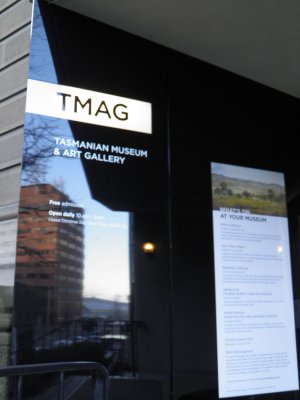 Here too is the excellent Tasmanian
Museum and Art Gallery (TMAG) and, of course, just up the Derwent is
the famous Museum of Old and New Art (MONA) which opened in January
2011 to publicity and controversy.
Here too is the excellent Tasmanian
Museum and Art Gallery (TMAG) and, of course, just up the Derwent is
the famous Museum of Old and New Art (MONA) which opened in January
2011 to publicity and controversy.
A recent edition of 1000 Places To See Before You Die by Patricia Schultz includes two places in Tasmania – Cradle Mountain and Freycinet National Park – but you can guarantee the next edition will include the extraordinary MONA dug down three massive storeys into sandstone and rock and full of challenging art and installations, some of them confrontational, some by big names like Picasso.
If the fine (and sometimes vulgar) art is the drawcard, the visitor is just as likely to come away in awe of the engineering of the galleries where sheer walls of rock soar dozens of metres above or below.
MONA – with a fine-dining restaurant, cafe, an on-site brewery and which hosts an annual music festival – has invigorated Hobart and its arts scene.
“I'd never have started this business without MONA giving me the confidence,” says Scott of hobartartwalks. “It's the big daddy of us all, and it's our MONA, that's how we see it.”
MONA is certainly something to see before you die.
And the TMAG – which has a close relationship with MONA – has just undergone a A$30 million refit and has a huge collection of historic artifacts as well as work by mainland and local artists.
Once considered a cultural backwater, Tasmania has leaped ahead in the past two decades and today is pulling home talented people who'd left for brighter lights. And -- because of flourishing vineyards and organic farming -- there's now a sophistication to Hobart few would have guessed a decade ago.
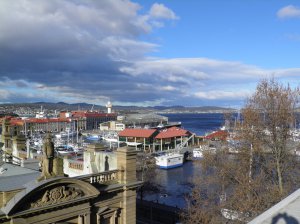 When it
comes to dining you are spoiled for choice.
When it
comes to dining you are spoiled for choice.
The Tasmanian Wine Centre in Collins St is a must-stop, you can take one of the boutique wineries tours which stops at MONA for their excellent selection, or drop in at the Lark Distillery on central Davey St for one of their handcrafted whiskies.
Louis Bernacchi wouldn't recognise his old hometown today.
Although if you stand beside him and see what he does – the harbourside with all those renovated and gentrified old buildings – in a strange way, maybe he would.


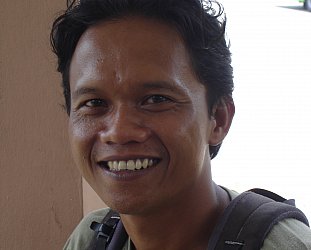

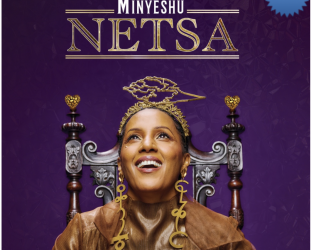
post a comment